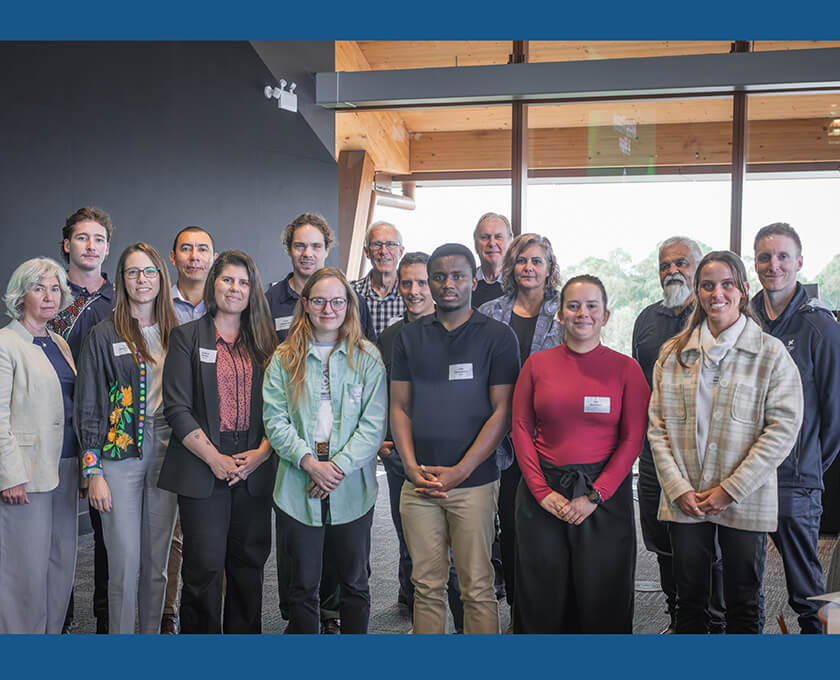June 24, 2025
Symposium Shines Light on Vital Research in WA

A study into the ways the native Chuditch, a carnivorous mammal found in Western Australia, utilises post-mining landscapes was one of 19 innovative research projects presented at Alcoa’s Environmental Research Symposium.
More than 120 delegates from 33 organisations across the country attended the symposium on 11 June, hearing about the latest research by Alcoa, collaborative partners and others from across industry, government and academia.
Hosted by Alcoa’s Forest Research Centre and supported by Murdoch’s Harry Butler Institute, the event included insights across fauna, flora, rehabilitation practices, water, and the importance of embracing Traditional Owner knowledge and practices to develop a legitimate two-way science approach to forest management.
In addition to insights into fauna behaviour, attendees witnessed presentations covering the secrets of seed dormancy in multiple species of native flowering plants, pathways of surface water flow in rehabilitation, and how decades of research had revealed the unique diversity of native orchids occurring on rocky outcrops throughout the Northern Jarrah Forest.
Former Alcoa Senior Research Scientist Dr John Koch, who spearheaded significant environmental research and development for the company over almost 30 years, explained how early investigations by the Department of Conservation and Land Management (CALM) indicated that the jarrah dieback pathogen spread due to pooling of water on sub-surface caprock.
“I started with Alcoa in 1984 and in those days, we were putting back Eastern States eucalypts, because the species we used in rehab had to be dieback resistant,” Dr Koch said.
“That was one of the requirements from CALM at the time, but we learned from experimental plantings that jarrah could grow well in mined areas, even when dieback had been present before clearing. From 1988, we put jarrah back in all the rehab areas and it survived very well.
“I think one of the reasons for that was that the bauxite mining process took away that caprock layer which meant the jarrah trees were then not as prone to dieback. Today, there are many thousands of hectares of jarrah, much of it more than 30 years old, and those trees are doing fine.”
Curtin University PhD candidate Heidi Mippy is a Noongar and Thiin-Mah Warriyangka First Nations woman undertaking a study into Noongar food and medicine plants.
“The topic of my PhD is Koorl Koorliny - in Noongar, that kind of means to go back,” she said.
“The bigger topic is Reimagining food production and landscape restoration systems through Noongar food and medicines. When I started writing the proposal for my PhD, I was getting lost in the science and wasn’t seeing things through Noongar philosophy, so I changed my approach to use Theory U, which is about changing systems thinking, and that really gives me the right framework to hold culture at the centre and to allow for different knowledge systems to come into the conversation.
“We've got lots of good examples of two-way science where Western science has met with traditional ecological knowledge or Noongar knowledge.
“What I don't think we have are the processes for how we bring the different knowledge systems and sciences together to be able to come up with solutions or, for example, to be able to put together a land management strategy that incorporates all the important values for the future and sustainability.”
Alcoa Research Manager and event organiser Dr Lucy Commander said it was rewarding to see the growth of the Environmental Research Symposium since it commenced in 2023.
“This event has gone from strength to strength since we first ran it with a handful of Alcoa environmental researchers and some immediate collaboration partners,” Dr Commander said.
“In just two years, we’ve grown to attract some of the best minds in environmental research from around the country, and some of the most accomplished practitioners, to share their knowledge and insights.
“The outcome of bringing such a community together is that we gain the understanding to mutually adapt and improve our approaches to land management and to ensure long-term success to protect and restore the environment into the future.”